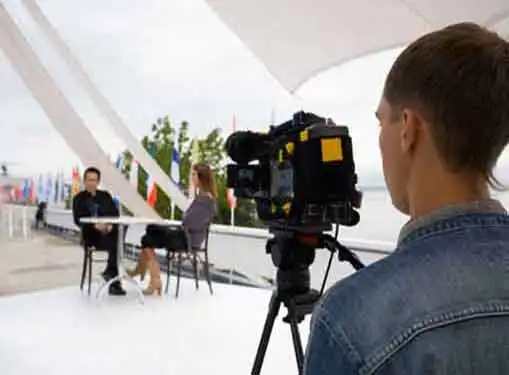Media Training
Covering Bridging Techniques in Media Training
Effective media training should always include training on bridging techniques. With these techniques under your belt, you can maintain control of the interview and guarantee coverage of your main messaging points.
Media training gives your company's leaders and key personnel the tools they need to accurately present your company to the media.

Although every media training event is different, there are certain strategies and techniques you should expect to be covered at every media training session.
One of those techniques is called "bridging". Bridging is a skill that enables you to reassert control and redirect the course of the interview. If you think about it, a bridge is really a safe transition between two points. Highway bridges safely carry drivers over dangerous chasms, transitioning them from one point of land to another. Interview bridging works the same way. But instead of taking you from one physical point to the next, bridging takes the interview to a different focus.
As a PR interview technique, there are two kinds of bridging you need to know about: Bridges that take the interview away from hard questions, and bridging that takes the interview toward your primary messaging.
Bridging that moves away from dangerous questions.
Bridging can refocus the interview after the journalist has asked a difficult or dangerous question. You can't ignore the question - but you can quickly address it and then shift the focus to something more positive. For example:
Interviewer asks: "Isn't this a bad time to raise prices?"
You respond: "Yes."
You bridge: "But let's take a look at the tax increases that are making it necessary for us to adjust our pricing."
Bridging that moves toward (or deeper into) primary messaging.
A more positive use of bridging happens when you shift the interview toward your primary messaging points. This gives you more control over the interview - and sometimes that's the only way to make sure your main points are covered.
Interviewer asks: "What is your company's mission?"
You respond: "To achieve 100% customer satisfaction."
You bridge: "And one of the ways we achieve total customer satisfaction is through our new, state-of-the-art call center."
Subtlety is golden when it comes to bridging. If you transitions are sudden or irrational the reporter may make derailing your interview his new mission in life. But if you enter the interview prepared to create a few smooth bridges, most reporters will roll with it with your redirects.
Share this article
Additional Resources for Entrepreneurs


Conversation Board
We welcome your comments, questions, and advice regarding bridging techniques and media training in general.